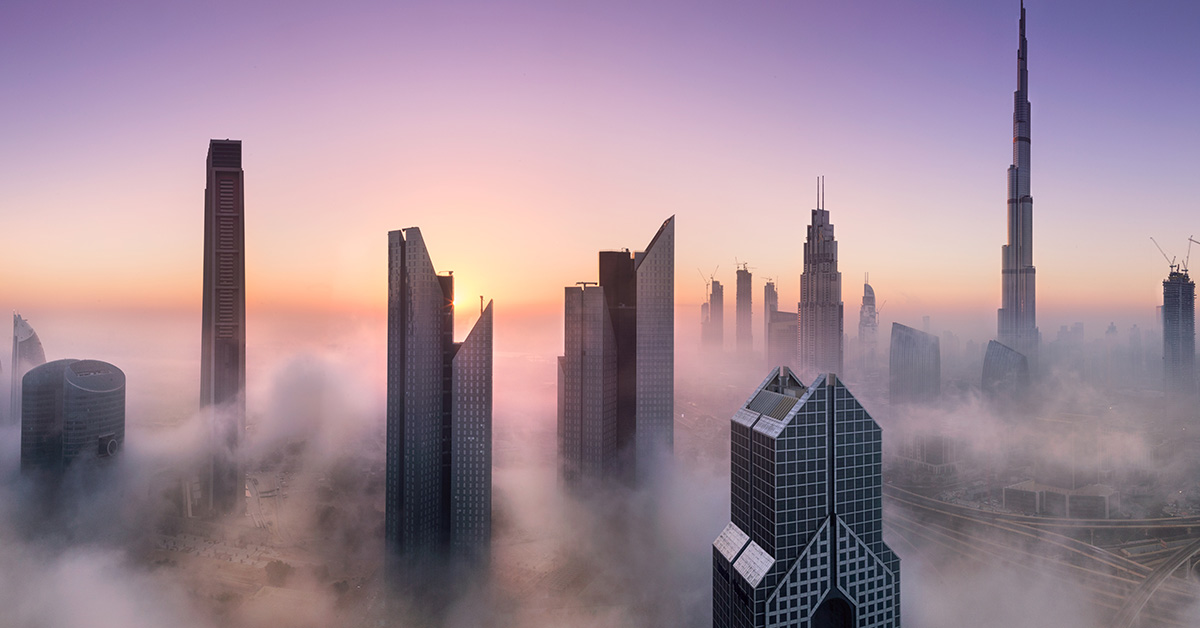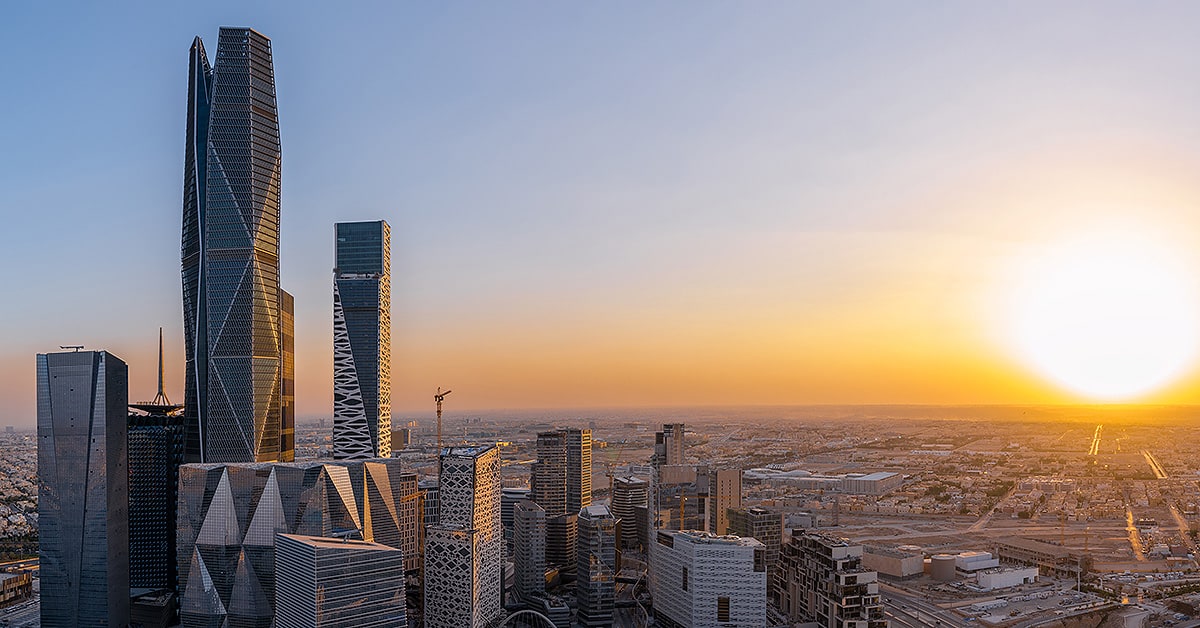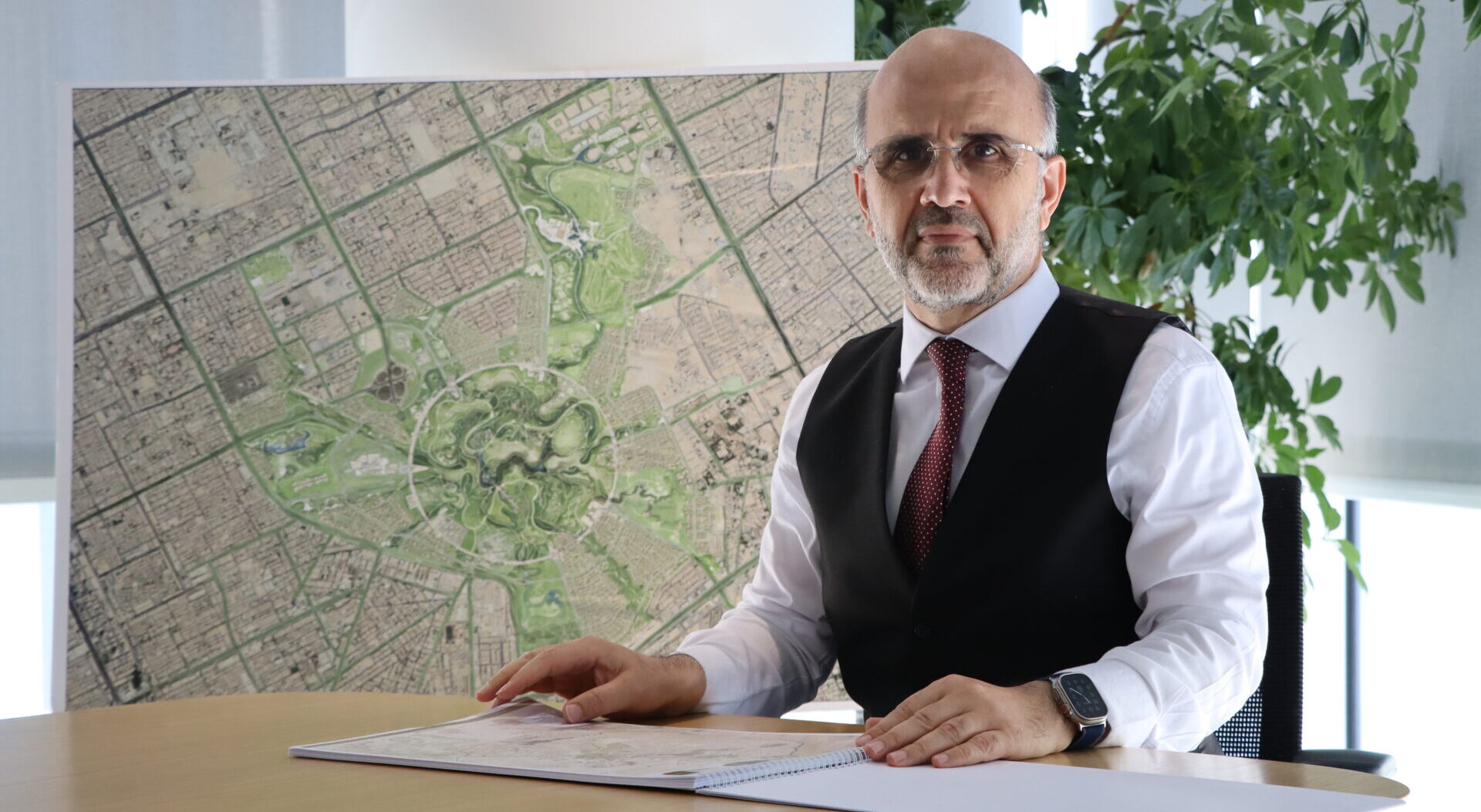 Dubai's Skyline, UAE. Photo © wyshad via ShutterStock.
Dubai's Skyline, UAE. Photo © wyshad via ShutterStock. .
The world is getting hotter, but air conditioning uses too much energy and emits too much carbon to be sustainable. What’s the future of a technology that we can’t live without, but also can’t afford to keep using? While innovators across the globe are attempting to develop alternative air conditioning systems like radiative cooling, architects are already adopting design strategies that make air conditioning systems more efficient.
The invention of air conditioning, like the earlier invention of elevators, drastically changed architecture and urban development. When cooling the interior became as simple as adjusting a thermostat, building design and urban form began to ignore the climate — at least for several decades in the 20th century.
Today, however, there is a growing consensus around the need for a change of course. Air conditioners consume an estimated 10% of global electricity, according to some estimates — and a staggering 70% of peak residential demand on hot days in the US and the Middle East. Since most electricity is still generated by burning fossil fuels, air conditioning is a huge driver of global warming as well as operational costs. Unfortunately, air conditioners also leak chemical refrigerants and potent greenhouse gasses, called hydrofluorocarbons, into the atmosphere.
Demand for space cooling is expected to rise sharply in the years ahead, according to a 2020 report by the United Nations Environment Programme (UNEP) and the International Energy Agency (IEA). As air conditioning becomes more affordable and necessary for millions of people across the globe, the problems that come with it will get worse, unless improvements are made. Paradoxically, the very technology used to cool our interiors is making our world warmer.
We urgently need more sustainable air conditioning technologies, particularly in warm regions like the Middle East. The IEA has set a target of doubling the energy efficiency of air conditioning by 2050, which would save the equivalent of all the coal-fired power generation capacity in China and India in 2018, and save up to USD 2.9 trillion in energy costs.
How can air conditioning become more efficient and sustainable? A few of today’s promising innovations include developing alternative air conditioning technologies, switching to renewable energy sources, and reducing peak cooling loads by designing buildings with external shading and passive cooling systems.
Radiative Cooling
Long before electricity, people in the desert made ice by harnessing a natural phenomenon called radiative cooling. At night, they poured water into shallow trays or insulated pits. The water would radiate its heat all night long, and by morning it turned to ice, even though the air temperature never dipped below freezing.
The reason it worked, as scientists figured out decades ago, is because some heat energy escapes through the earth’s atmosphere into the cold void of outer space. But only certain wavelengths can pass through unimpeded. Specifically, the atmosphere is transparent to infrared wavelengths between 8 and 13 micrometers. “Think of the atmosphere as a blanket, with a few holes in it,” as National Geographic wrote.
In 2012, materials scientist Aaswath Raman, of the University of California at Los Angeles, set out to harness the power of radiative cooling — not just at night, but also during the daytime. Unlike previous researchers, Raman and his team had access to nanotechnology. They ultimately designed a multilayer film — consisting of alternating layers of silica and hafnium dioxide — that has two outstanding performance attributes. One, it absorbs no heat from the sun because it is almost perfectly reflective. And two, it emits heat energy at the optimal infrared wavelengths to escape the earth’s atmosphere.
When this high-tech material is placed under a clear sky, whether day or night, it quickly becomes cool to the touch. Without any electricity, it channels heat directly to outer space. It also cools the surrounding air, in some cases by 5 degrees C or more.
Raman and his colleagues founded a company, SkyCool Systems, to develop and deploy rooftop cooling panels that connect with existing air conditioning systems. In 2020, SkyCool successfully installed film-coated panels on the roof of a supermarket in California. Water that flows through the panels is cooled and circulated through the air conditioning and refrigeration systems, lowering the building’s electricity consumption by around 15 to 20 percent. The company claims that its panels save two to three times more electricity than solar panels, given the same surface area. SkyCool is now attempting to lower the cost of the film and scale the technology for larger applications.
Evaporative cooling
Everyone knows something about evaporative cooling — it’s why your body sweats to get rid of heat. As moisture evaporates from a surface, such as the skin of one’s body, it carries heat with it, resulting in the cooling of the underlying mass.
Professor Ernest Chua of National University of Singapore has developed a prototype of an evaporative cooling system that could potentially be used for buildings and individual apartments. Called the first “hybrid humidifier water-based air conditioner,” the system uses no chemical refrigerants, but only water and electricity. According to Chua, the water-based air conditioner consumes 30 percent less energy than a conventional system with the same cooling power, and would cost less money for consumers if manufactured on a large scale.
“But there is a limitation,” Chua explained in an interview. “The air needs to be dry.” That’s why his experimental model contains two separate stages. First, the system dries a quantity of air using membranes that filter and expel the moisture. Then, the water inside the unit evaporates, expelling heat from the dehumidified air along with the moisture.
Professor Chua and his team are attempting to scale up their system and make it more user-friendly, as well as incorporate “smart features such as real-time tracking of energy efficiency,” according to National University of Singapore. As he told the World Economic Forum, he aims to perfect the system to “provide sustainable cooling for everybody” and “help lessen global warming and reduce death rates” from heat.
The role of renewable energy
From a carbon emissions standpoint, one of the best ways to make air conditioning less problematic is to accelerate the switch to renewable energy sources such as solar energy. Renewable energy will drastically reduce or eliminate the greenhouse gas emissions associated with air conditioning and other building operations.
The good news is that KSA has initiated ambitious renewable energy developments as part of Plan 2030 and the National Renewable Energy Program (NREP). Last year, the Kingdom strengthened its investment in clean and renewable assets by financing several projects in the solar sector and launching the National Infrastructure Fund (NIF). In the Riyadh area alone, current solar energy developments include the Saad Solar Energy Project, the Laila Solar Energy Project, and the Wadi Al Dawasir Solar Energy Project.
High-Performance Building Envelopes
Architecture can help reduce cooling loads. Even with conventional air conditioning technology, building owners can achieve dramatic gains in air conditioning efficiency — and reductions in operating costs and emissions — by working with architects and engineers to design high-performance facade or building envelope systems.
The PIF Tower in Riyadh’s King Abdullah FInancial District, for example, has a climate-responsive envelope that includes a triple-glazed curtain wall system and integral shading. By insulating and shading the facades, designers and their clients can reduce solar heat gain and thereby reduce the burden placed on the air conditioning system. High-tech facade systems can help make air conditioning more efficient, today.

The PIF Tower within the KAFD. Riyadh, Saudi Arabia. Photo © Bader Otaby Via ShutterStock
Learning from vernacular traditions
Vernacular building traditions in hot, arid regions also offer lessons for reducing dependence on air conditioning. For many centuries, people in the Middle East relied on passive cooling techniques such as thermally massive walls, orientation, cross-ventilation, and the use of screens or shutters to cope with the heat.
Contemporary architects may selectively adapt vernacular design techniques to the challenges of modern development and construction. The point is not to simulate the past or shun the benefits of modern technology. Instead, passive and active cooling systems can complement each other in new, innovative ways. As architects become reacquainted with the relationship between climate and building form, massing, materials, and envelope design, we will discover new ways to combine the best of old and new building technologies.
The future of air conditioning, then, must include technological innovations to improve efficiency — but that’s just the beginning. To reduce emissions and improve human comfort, the building industry must also integrate renewable infrastructure upgrades, and refocus our attention on the relationship between architecture and climate.
As an architecture and engineering firm, Omrania stands at the forefront of innovation, making a significant impact among architecture firms in Riyadh, Saudi Arabia, with its sustainable and forward-thinking designs.







